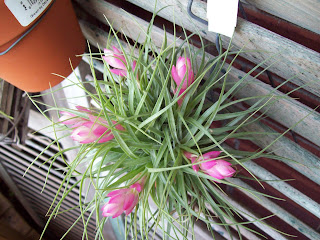Loving Vitex More And More

We moved into our new place last August. There's over an acre that was simply unattended for at least two years, one of which included a drought. The majority of the previous owners' landscape choices are questionable to say the least ... like bending Cypress trees allowed to grow out over the pool like something out of a Dr. Seuss book.
But, hallelujah, there are three
 I wish more people planted Vitex instead of crape myrtles. They don't get hammered with powdery mildew or insect infestations the way most crapes do. As long as they have ample sun, this fast-growing, somewhat small blooming tree will give you a bounty of purple spikes that sort of look like tufts of lavender. Coincidentally, Vitex can often be found listed on the Internet as a "lavender tree" or "chaste tree."
I wish more people planted Vitex instead of crape myrtles. They don't get hammered with powdery mildew or insect infestations the way most crapes do. As long as they have ample sun, this fast-growing, somewhat small blooming tree will give you a bounty of purple spikes that sort of look like tufts of lavender. Coincidentally, Vitex can often be found listed on the Internet as a "lavender tree" or "chaste tree." Even though I consider it a "small" tree, it has an ability to develop multiple trunks. Most found in this region are 6-12 feet tall and mostly bloom in purple. Some very mature Vitex in Houston have reached 20 feet, however, and white or pink versions are found here and there.
I have noted in past articles and blogs that Vitex is a great "drought-tolerant" plant, but I think my favorite attribute is how adaptable it is to almost any kind of soil. In other words, it tolerates poor soil ... and poor
I suppose my only negative comment is that it looks kind of scraggly during the winter when there are no leaves or blooms. Then again, so do crape myrtles. And the blooms, like those of crapes, and despite the "lavender" moniker, are not aromatic at all.
By the way, remember that the blooms happen on new wood. So make sure to prune them like crape myrtles coming out of winter. Just don't over-prune them.
And, much as with the crape, almost any kind of food will work ... from standard crape myrtle food to rose food.
-------------------------------------------------------------------------------------------------------------------------------------------------------------------
Here are pictures of my trees:
blue and white chase
Pink chase
Montrose Purple
Pink chase bloom
















































